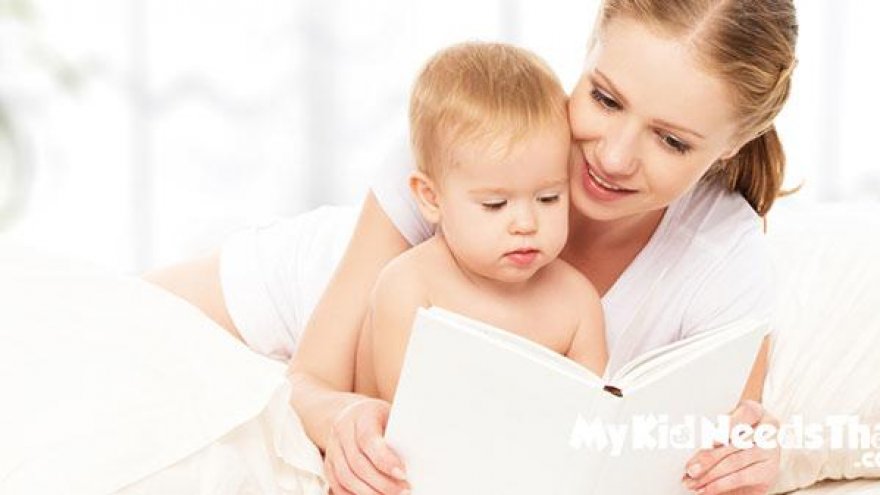10 Great Tips To Help Your Baby To Read

The Importance Of Reading With Your Infant
Reading is one of the most important cognitive skills that children have to learn and to master. Reading provides the foundation for the collection of written or graphic information so that the brain can process these same information. In turn, this helps develop problem-solving skills, creativity, logical reasoning, critical thinking skills, memory, and language and communication skills.

There are some parents who believe that reading is basically for older children. However, child developmental psychologists say that reading should be introduced into a child’s life right in infancy. Even though babies below 1 year of age don’t show any discernible signs of reading comprehension, their abilities are nevertheless confirmed in other aspects of their growth and development.
Teaching your baby to read may seem a very difficult task. It is. But, it can be done. You only need to really understand the developmental milestones of an infant and then apply these principles in helping your baby learn how to read, or at least, introduce the concept and value of reading.
We have listed here 10 great tips you can consider in teaching your baby to read. These are not magic formulas but we are optimistic that you will also find them useful.
 10 Great Tips to Teach Your Baby to Read
10 Great Tips to Teach Your Baby to Read
Always Read To Your Baby
Many parents might find it unusual to be reading to their babies especially if they are still newborns. However, studies do show that learning to read should start right in infancy. It does not necessarily mean that your baby will have to read straight away. He or she simply needs to hear your voice and look at your face every time you open a book and read to him or her.
Make Sure to Put on a Happy Face and Voice
Don’t read like a grumpy old person or read monotonously. Try to read the material to your baby with a happy tone of voice and always wear a smile. Your baby, even though he or she may not say it yet, can actually feel if you are happy reading the book to him or her or not. Your baby is at a crucial point where he or she needs to put his or her trust in you. How can you trust someone if he or she does not present a happy face and voice?
Choose the Right Reading Material
You have a baby and not a 10-year old. This simply means that you have to be quite picky in the material that you are going to choose for your baby. A good start will be children’s story books and nursery rhymes. You can also get song books, board books, and even cloth books. Technically, you can even sing lullabies to help associate words later on.
 Set the Mood
Set the Mood
Make sure to read in a quiet, relaxing place preferably away from distractions. Loud noises can drown your voice and your baby might not be able to really appreciate what you are saying. Make sure as well to cradle your baby in your arms propping him or her to sit up with his or her back resting on your torso. Then begin your reading session.
Enhance their Sensory Experience
Akin to setting the mood, you may want to use mood lights, crib toys and even soft music or melodies to help improve the overall sensory experience. This is why some electronic books that have interactive lights and music can help facilitate learning how to read among babies. You can play a happy song if the story calls for it or even play a soft mellow music if you want the reading experience to lead to rest for your baby.
(Hey! You May Want To Check Out: 12 Best Musical Toys For Babies)
Be a Role Model
Your baby needs to see you reading, too. You need to convey a message that it is fun to read and that everyone who reads are happy. You may not think that this will help but many parents are already doing it and have reported great results.
Make Outdoor Activities Learning Opportunities
If you are going to go out say, to the mall or the park or anywhere else, scan your surroundings for potential learning opportunities. For example, you can point to your baby certain letters at the mall entrance you are going. Learning the alphabet, numbers, shapes, and colors does not need to be confined only in books and toys. Ordinary objects around you can supply these learning opportunities. You just have to be aware of these and make the effort of teaching your baby in a happy tone of voice.
(You May Also Find This Useful: Creating A Stimulating Environment For Your Baby)
Use Pictures
Babies may not appreciate written words, yet. But they sure can appreciate pictures. Combining pictures with sounds can help stimulate your baby’s motivation to read. Picture books can thus be very helpful in this regard. Now imagine if the picture actually moves. This will greatly enhance your baby’s motivation to read.
Introduce Rhymes
What better way to provide a reading and learning experience than using word families? Rhymes have been used to help children expand their cognitive skills, particularly their language skills. When used on babies, these can help convey a message of fun reading which he or she will eventually use as motivation for reading later on.
Expand Your Baby’s Library
Your baby may now have his or her favorite book but this should not stop you from expanding his or her own collection of reading materials. Books are timeless. Your baby will still be reading his or her books even when he or she is already a grown up. In many cases, children’s books get to be handed down to succeeding generations in the family.
These are just 10 tips to help you teach your baby to read. Unfortunately, there is no foolproof formula in teaching babies to read simply because, well, they are still babies. Even a grown-up child may be challenging to teach how to read; what more a baby? Nevertheless, these tips will hopefully help you find a more effective strategy in teaching your baby how to read.







